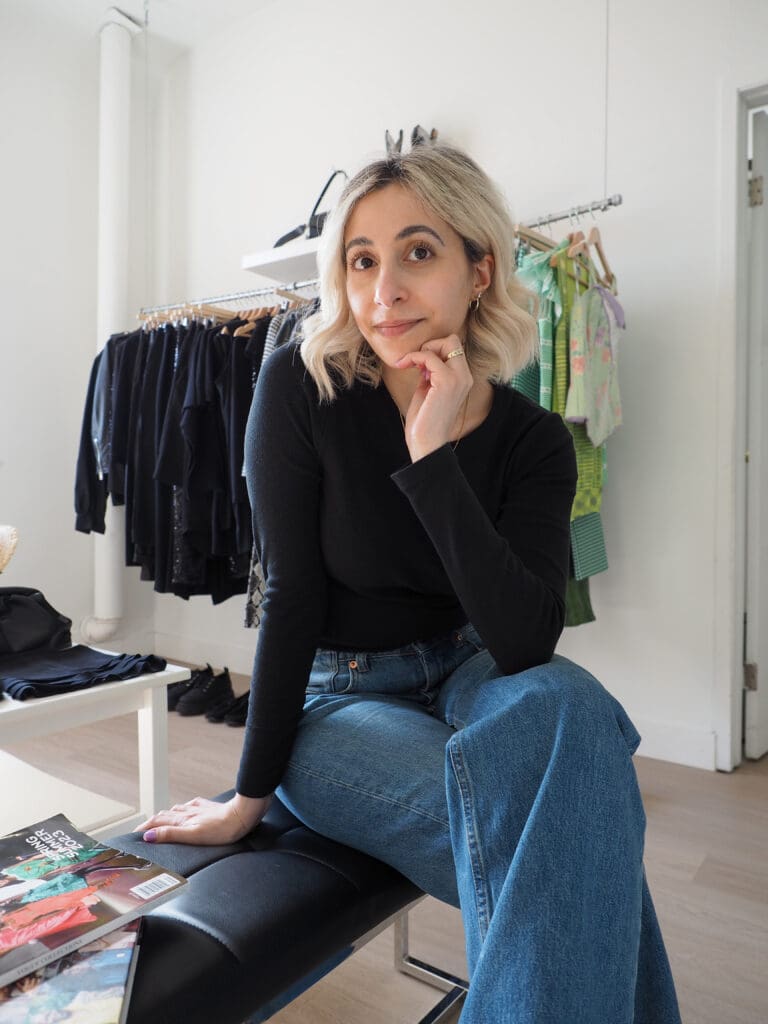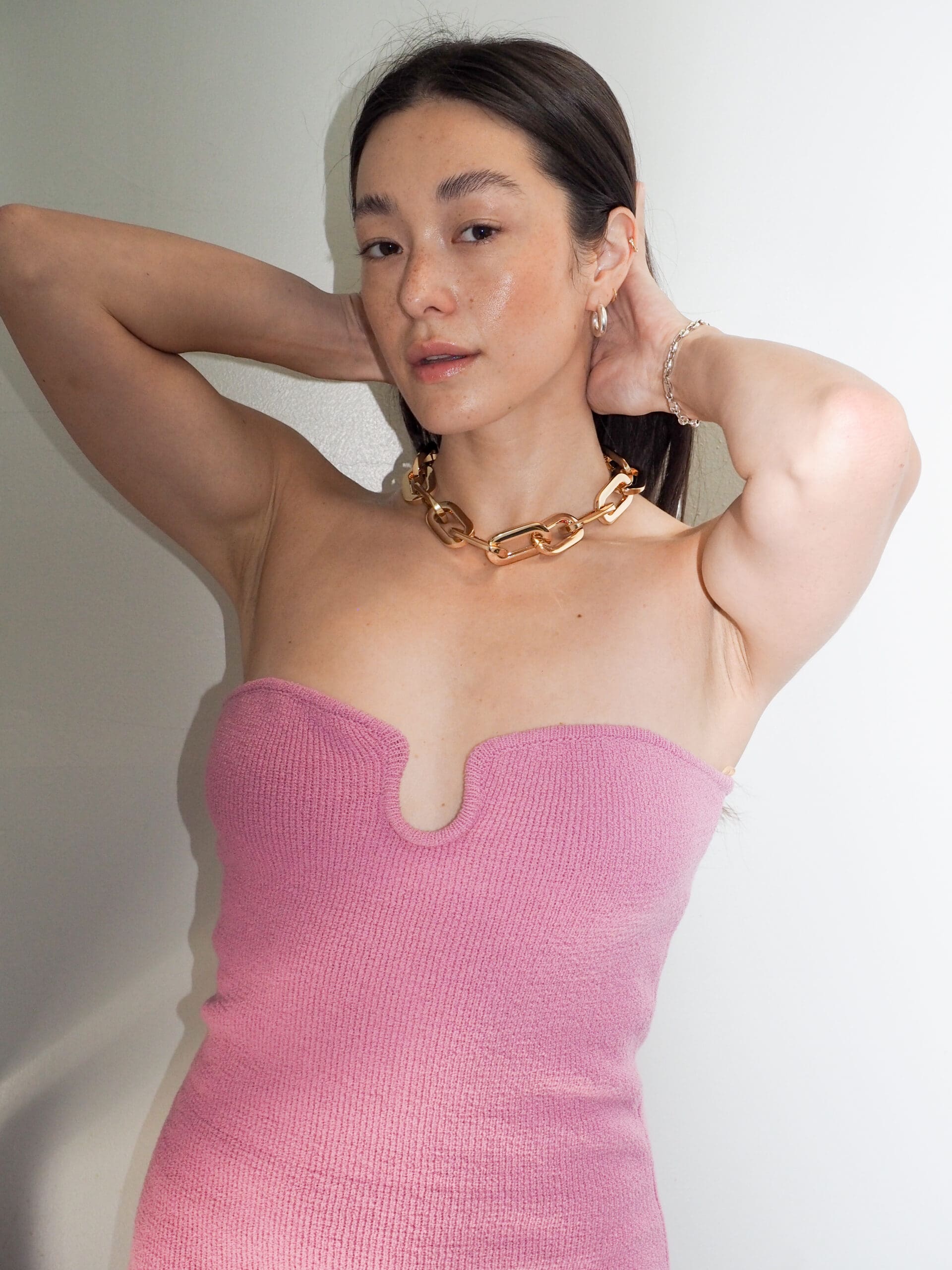The thrill of the hunt. A gem among junk. Thrifting is a skill that comes with a certain cultural cache—“Oh this? It’s vintage!”—and the satisfaction of finding a deal. A vintage item suggests a certain amount of time spent scouring the racks at Value Village. But if someone else did the scouring for you, what then?

That’s where the resale market comes in. These days, it’s big business—and it’s getting bigger. According to a trend report by ThredUp, resale is driving the secondhand market share, which is projected to double over the next decade, outpacing fast fashion (and nearly every other channel).
But first things first: the lingo. Vintage isn’t just a blanket term for a preloved item—it refers to an item between 20 and 99 years old. (Anything older is antique.) “You can do a whole story on companies calling things vintage … they’re lying to their customers,” says Randa Salloum, owner of Vancouver-based consignment shop Collective Will. “I’m very careful when I do the buying for the shop. If someone doesn’t know how old their pieces are, but we suspect it’s vintage, I still will not call it vintage.”
And then there’s resale, which is a blanket term that can encompass vintage as well as any preloved item. The consensus among resellers is that once you’ve entered a curated secondhand shop, you’ve left thrifting territory. But if that’s where you’re shopping, can you call yourself a thrifter? Another consensus: it doesn’t really matter. But Salloum explains it this way: “Remember the episode of Seinfeld where Elaine gave the big salad, but George bought it?”
“It’s not like you’re stopping in once a week and getting all the best stuff, because it takes a lot of determination,” says Nicole McConnell. “I can’t even explain how arduous the process is, picking a collection of thrift.” She is the owner-operator of secondhand boutique Shop Woven, and its sister shop Woven Benevolent Society, which focuses on clothing equality (“It’s not a lack of supply, it’s a lack of equal distribution”). Shops like hers and Salloum’s offer curated secondhand shopping experiences, saving customers the time and effort of searching through the racks.
And when searching for treasure, it’s no surprise that seasoned thrifters approach the hunt differently. McConnell, who thrifts to stock her East Vancouver store, has a few tricks up her sleeve. “Watching the racks that are rolled out first. Knowing the tagging system. Being really nice to the employees.” (To that last point, she’s brought in doughnuts for thrift store staff before.) Salloum’s shop is consignment, but she knows how to tell pros from casual thrifters. “It’s elbows up,” she says. “They’re always going to be the first ones in the store. And you know them because of the speed at which they’re shopping … they never take a cart with them. They just throw everything on their arms because they don’t have time for like, taking their time.” And take note: if something’s out of place, it might be deliberate. “If you go to the racks and find clothes that are just tossed behind a rack, it’s because someone’s hiding stuff,” she says.
The labour-intensive work of thrifting is also done by resellers like Tishon Jno-Baptiste and Kyle Gardiner, who then use the online platform Poshmark to host their “closets”: Dealsonstyle and iSpyLuxury. The pair has sold more than 1,000 items since January of this year, not long after the platform launched a new livestream feature called Posh Shows. “You’re almost having an in-person shopping experience, but you’re virtual,” explains Jno-Baptiste. “With live selling, what helps is being able to showcase our personality, showcase who we are to our community. It helps people put a face to who our brand is.”
Founder and CEO of Poshmark, Manish Chandra, reiterates how important it is to bring community back to online shopping. “We launched live selling via Posh Shows as a way for sellers and shoppers to connect live, build stronger customer relationships and move inventory efficiently in real time,” he says. He credits his grandfather’s shop in Delhi, India, for helping to shape his vision. “It was this vibrant, social experience that showed me that commerce thrives on human connection.”
For Jno-Baptiste and Gardiner, this is a side-hustle, so they appreciate that the platform comes pre-loaded with features that encourage success. “I love that there’s tools built in,” says Gardiner. “Part of the 20 per cent that we pay to Poshmark for using their services comes along with these marketing tools that they have built in. So items that are in our inventory and in our store are still going to be pushed through the SEO system, and going to be pulled up in searches.”
Salloum, who has an online component to her shop, confirms that online is a tough market if you’re doing everything yourself. “I uploaded photographs of my model and the pieces every single week. Every piece of the store was at one point online but, at the end of the day, that secondhand shopper really does want to come in and try it on,” she says. “Secondhand online is really difficult.”
But when it’s good, it can be really good. Alice Whittick can attest, as the owner-operator of The Sequel Sale, a Toronto-based shoppable Instagram account devoted to high-end resale. “For online, the most important trait you need is to be detail-oriented. There are many, many, many details to each garment, and you want to communicate all of those to your buyer as if they were looking at it and holding it for themselves. It can be hard to find words for how it feels, for the fabric and the fit and the vibes.”
So why has secondhand skyrocketed? The answer is, of course, that there’s no one answer. But sustainability is a common theme. “Those who consider secondhand first are not only smart shoppers, but also are like little environmental angels,” says Whittick. And according to Chandra, that eco-friendly movement may be largely driven by younger generations, whose spending power is on the rise. “People are increasingly recognizing their collective impacts on the world, especially Gen Z, who are embracing secondhand as a way to shop for unique, one-of-a-kind pieces while keeping fashion out of landfills.”
Of course, value is a factor, as is the desire to stand out from the crowd. “A lot of people love the idea that they are getting things that other people, for the most part, can’t just go out and buy—a wardrobe purchased resale is bound to be more unique and a lot harder to copy,” says Whittick. “I don’t think people feel cool showing up wearing brand new items purchased from a fast-fashion retailer anymore.”
It’s more than just getting dressed—our identity, the planet, and the circular economy are all wrapped up in the business of resale. Plus, it’s a pretty cool job. “There’s a lot more competition, but there’s still enough to go around,” says McConnell. “I just find it really delightful that people are creating their own jobs out of a passion for fashion.” —Jill Von Sprecken

Be the first to comment